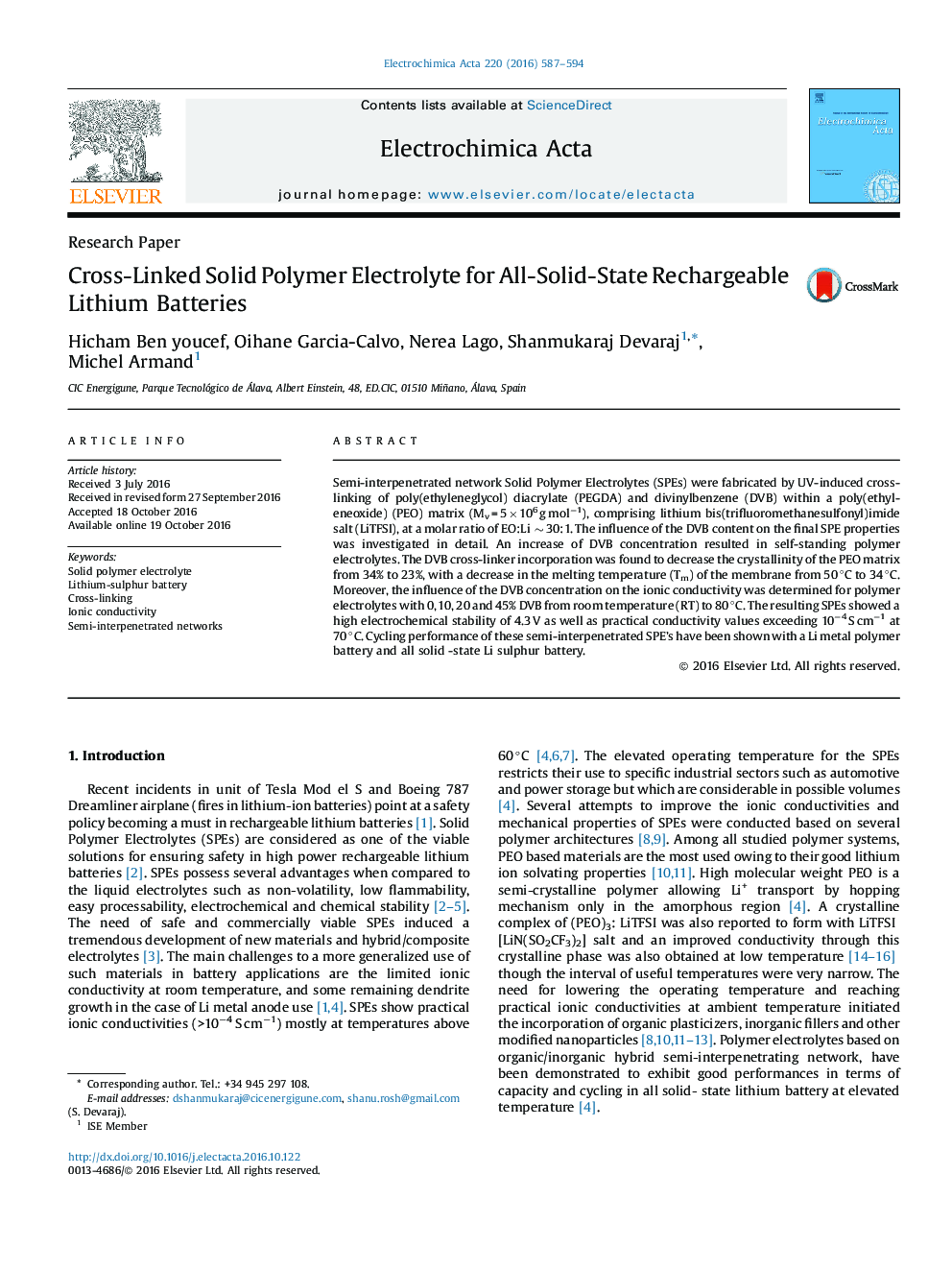| Article ID | Journal | Published Year | Pages | File Type |
|---|---|---|---|---|
| 6472439 | Electrochimica Acta | 2016 | 8 Pages |
Semi-interpenetrated network Solid Polymer Electrolytes (SPEs) were fabricated by UV-induced cross-linking of poly(ethyleneglycol) diacrylate (PEGDA) and divinylbenzene (DVB) within a poly(ethyleneoxide) (PEO) matrix (Mv = 5 Ã 106 g molâ1), comprising lithium bis(trifluoromethanesulfonyl)imide salt (LiTFSI), at a molar ratio of EO:Li â¼Â 30:1. The influence of the DVB content on the final SPE properties was investigated in detail. An increase of DVB concentration resulted in self-standing polymer electrolytes. The DVB cross-linker incorporation was found to decrease the crystallinity of the PEO matrix from 34% to 23%, with a decrease in the melting temperature (Tm) of the membrane from 50 °C to 34 °C. Moreover, the influence of the DVB concentration on the ionic conductivity was determined for polymer electrolytes with 0, 10, 20 and 45% DVB from room temperature (RT) to 80 °C. The resulting SPEs showed a high electrochemical stability of 4.3 V as well as practical conductivity values exceeding 10â4 S cmâ1 at 70 °C. Cycling performance of these semi-interpenetrated SPE's have been shown with a Li metal polymer battery and all solid -state Li sulphur battery.
